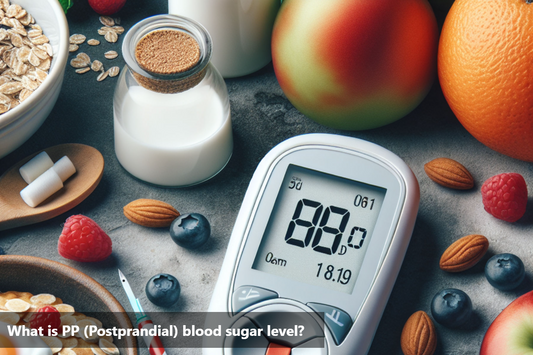The choice of flour is crucial for managing diabetes. Different flours affect blood sugar levels differently. Factors like fiber and carbs should be considered. Understanding flour types can aid in diabetes management.
Benefits of Low Glycemic Index Flour
The use of low glycemic index (GI) flour offers several potential benefits, particularly for individuals concerned about managing their blood sugar levels, promoting overall health, and preventing chronic diseases. Here are some of the benefits of incorporating low GI flour into the diet:
Blood sugar management: Low GI flour causes a gradual increase in blood sugar levels, preventing spikes and crashes, crucial for diabetes management.
Weight management: Low GI foods made with low GI flour are filling, promoting satiety and reducing overeating, aiding in weight control.
Energy levels: Low GI flour provides sustained energy, enhancing focus and productivity, and supporting physical performance.
Heart health: Low GI diets with low GI flour may improve lipid profiles and insulin sensitivity, lowering cardiovascular disease risk.
Digestive health: Low GI flour, rich in fiber, supports digestive function, preventing constipation and promoting a healthy gut.
Nutrient density: Low GI flours are nutrient-rich, offering essential vitamins, minerals, antioxidants, and healthy fats for overall health.
Top 5 flours good for diabetes:
Almond Flour
Benefits of almond flour for diabetes:
Low carbohydrate content helps in managing blood sugar levels effectively
High in healthy fats and protein, which can increase satiety and prevent extreme spikes in blood sugar after meals
Lower glycemic index compared to refined wheat flour, resulting in a less significant impact on blood sugar levels
Coconut Flour
Low glycemic index to minimize impact on blood sugar levels
High fiber content promotes satiety and helps regulate blood sugar spikes
Naturally gluten-free, suitable for individuals with gluten sensitivities or celiac disease
Chickpea Flour
Chickpea flour, also known as gram flour or besan, offers several advantages for individuals with diabetes. Here are some key benefits:
Low Glycemic Index: Chickpea flour has a low glycemic index, which means it raises blood sugar levels slowly, helping to maintain stable blood glucose levels.
Rich in Fiber: Chickpea flour is a good source of dietary fiber, which can aid in blood sugar regulation by slowing down the absorption of glucose.
High in Protein: Protein-rich foods like chickpea flour can help improve satiety, reduce cravings, and support blood sugar control.
Nutrient-Dense: Chickpea flour is packed with essential nutrients like magnesium, which is important for insulin function and blood sugar regulation.
Versatile and Tasty: Chickpea flour can be used in various recipes to create delicious and diabetic-friendly meals without compromising on taste or texture.
Oat Flour
Low glycemic index helps regulate blood sugar levels and improve insulin sensitivity.
Rich in fiber, aiding in controlling blood sugar spikes and promoting digestive health.
May help lower cholesterol levels, reduce the risk of heart disease, and support weight management.
Spelt Flour
Low Glycemic Index: Spelt flour has a low glycemic index, which means it doesn't cause a rapid spike in blood sugar levels.
Rich in Fiber: Spelt flour is rich in dietary fiber, which aids in blood sugar management by slowing down the absorption of sugar.
Nutrient-Dense: Spelt flour contains nutrients such as magnesium, which plays a role in regulating blood sugar levels.
Glycemic Index of Flours
Glycemic Index of Flour |
Type of Flour |
Source |
|---|---|---|
70 - 85 |
White wheat flour |
Wheat |
50 - 70 |
Whole wheat flour |
Wheat |
Below 70 |
Whole grain flour |
Various grains (e.g., barley, oats) |
0 - 20 |
Almond flour |
Almonds |
45 - 55 |
Coconut flour |
Coconut |
45 - 55 |
Buckwheat flour |
Buckwheat |
53 - 55 |
Quinoa flour |
Quinoa |
54 - 77 |
Spelt flour |
Spelt wheat |
65 |
Amaranth flour |
Amaranth seeds |
60 - 70 |
Barley flour |
Barley |
50 - 62 |
Brown rice flour |
Brown rice |
33 - 43 |
Chickpea flour (besan) |
Chickpeas |
21 - 30 |
Lentil flour |
Lentils |
40 - 50 |
Rye flour |
Rye |
65 - 70 |
Tapioca flour |
Cassava (Tapioca root) |
70 - 75 |
Corn flour |
Corn |
15 - 25 |
Hazelnut flour |
Hazelnuts |
75 - 85 |
Potato flour |
Potatoes |
30 - 40 |
Teff flour |
Teff grains |
65 - 70 |
Chestnut flour |
Chestnuts |
60 - 70 |
Sorghum flour |
Sorghum grains |
22 - 35 |
Green pea flour |
Green peas |
70 - 80 |
Millet flour |
Millet grains |
33 - 43 |
Chickpea flour (gram flour) |
Chickpeas |
65 - 70 |
Cassava flour |
Cassava root |
45 - 55 |
Oat flour |
Oats |
25 - 50 |
Soy flour |
Soybeans |
40 - 50 |
Sunflower seed flour |
Sunflower seeds |
Flours to Avoid/ use Less in Diabetes
When managing diabetes, it's essential to be mindful of the types of flours you consume. While some flours may be suitable for diabetics in moderation, others should be used sparingly due to their impact on blood sugar levels. Here are some flours to consider using less often if you have diabetes:
White Flour: White flour has a high glycemic index, meaning it can cause a rapid spike in blood sugar levels. Consider switching to whole wheat flour or other whole grain alternatives for better blood sugar control.
Cake Flour: Cake flour is highly processed and refined, making it less nutritious and more likely to raise blood sugar levels quickly. Opt for almond flour, coconut flour, or other low-carb flours for baking diabetic-friendly treats.
Rice Flour: Rice flour is another high-glycemic option that can lead to blood sugar spikes. Try using quinoa flour, buckwheat flour, or chickpea flour instead for a lower glycemic impact.
By making small changes to the types of flours you use, you can better manage your blood sugar levels and support your overall health as a diabetic individual.
Bottom Line:
In the conclusion of this blog about choosing the right flour for diabetes management, it is essential to consider the various flour options available and personalize your choice based on individual needs. When it comes to managing diabetes, selecting the best flour can have a significant impact on blood sugar levels and overall health.
Among the different flour options discussed in the blog - whole wheat flour, almond flour, and coconut flour - each offers unique benefits for diabetics. Whole wheat flour provides essential nutrients and fiber, which can help regulate blood sugar levels. Almond flour, on the other hand, is low in carbohydrates and high in healthy fats, making it a suitable choice for those looking to control their blood sugar. Coconut flour, with its low glycemic index, is another great option for diabetes management.
Missing Tasty Rotis & Parthas because of your Diabetes? Not anymore. Introducing DiabeSmart Sugar Care Atta:
✅Clinically Tested
✅Recommended by Doctors
✅Crafted by Nutritionists
References
- Flour Power: Exploring the 10 Best Flours for Diabetes Management ...
- Nutritional Values of Teff (Eragrostis tef) in Diabetic Patients ...
- Gestational diabetes diet: MedlinePlus Medical Encyclopedia
- Ancient Wheat Diet Delays Diabetes Development in a Type 2 ...
- HOW to make a mix of low glycemic index flours for a good ...
This Blog post is an initiative by DiabeSmart, to provide accurate and Nutritionist / Doctor approved information related to Diabetes. DiabeSmart is India's first Food brand designed specifically for Diabetics, that has been clinically tested on Diabetics and Pre-Diabetics to deliver 55% - 70% lower Sugar spikes. DiabeSmart is part of Lo! Foods - India's leading brand for Everyday Functional Health foods.













